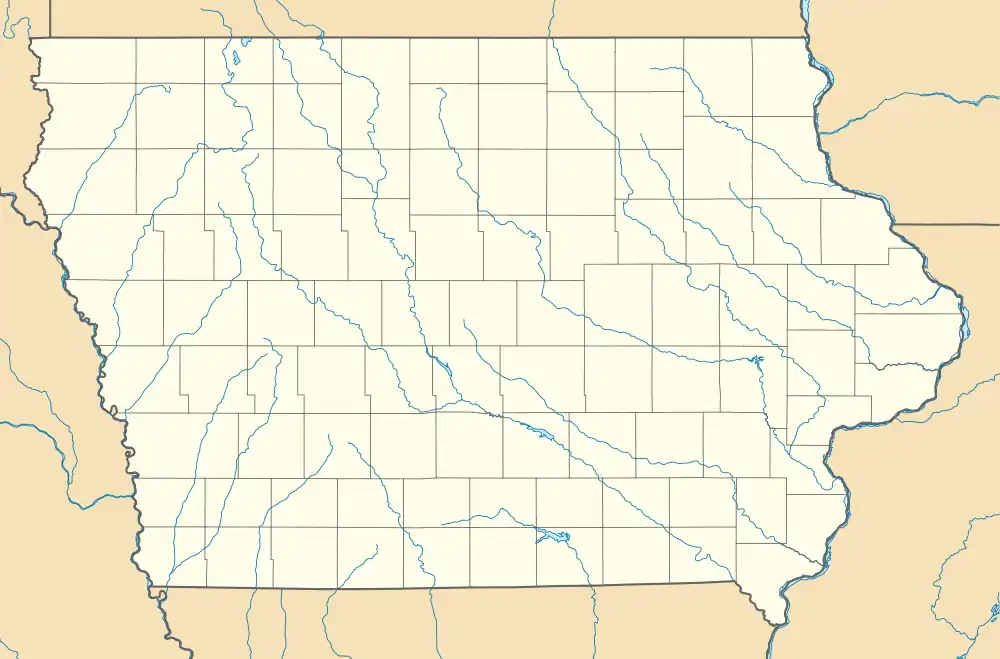Reverend George B. Hitchcock House | |
 | |
  | |
| Nearest city | 63788 567th Lane in Cass County, near Lewis, Iowa |
|---|---|
| Coordinates | 41°18′11.7″N 95°6′12.5″W / 41.303250°N 95.103472°W |
| Built | 1855 |
| Architect | George B. Hitchcock |
| Architectural style | Federal |
| NRHP reference No. | 77000500 |
| Significant dates | |
| Added to NRHP | November 09, 1977[1] |
| Designated NHL | February 17, 2006[2] |
The Reverend George B. Hitchcock House is a historic house museum in Cass County, Iowa, near the city of Lewis. Built in 1856 by the Congregationalist minister George B. Hitchcock, it has features indicative of its use as a "station" on the Underground Railway, corroborated by documentary evidence of Hitchcock's involvement in the shelter and transport of escaped slaves. It was declared a National Historic Landmark in 2006.[2][3] It now houses a museum.[4]
Description and history
The Hitchcock House is located west of the city limits of Lewis, on a hill overlooking the western bank of the East Nishnabotna River. It is a two-story structure, built out of locally sourced random ashlar sandstone, and resting on a rubblestone foundation. Its walls are 21 inches (53 cm) thick, and its interior framing is heavy hand-hewn timbers. Stylistically it is a vernacular interpretation of Federal period architecture. Unusual features of its interior include an apparently purpose-built basement chamber, whose access was probably concealed by a false cabinet. The other basement room is fitted with a cooking fireplace, and was accessible via an exterior entrance and by stairs from above. It is surmised that these rooms were used for the shelter and support of fugitive slaves.[3]
The minister George B. Hitchcock (1812–1872) built the house around 1855 and lived in it from 1856 to 1865. At the time of its construction, it overlooked two major east–west trails, leading to ferry crossings on the river. Hitchcock was involved in the American abolitionism movement known as the Underground Railroad, giving sanctuary to escaped slaves. The property was used as a farm until 1966, when it was sold to the state. It underwent a major restoration in the 1980s, and is now managed by the county as a historic house museum, interpreting the history of the Hitchcock family and the Underground Railroad.[3]
See also
References
- ↑ "National Register Information System". National Register of Historic Places. National Park Service. January 23, 2007.
- 1 2 "Reverend George B. Hitchcock House". National Historic Landmark summary listing. National Park Service. Archived from the original on June 6, 2011. Retrieved October 3, 2007.
- 1 2 3 Leah D. Rogers and Clare L. Kernek (November 15, 2004). "National Historic Landmark Nomination: Reverend George B. Hitchcock House" (pdf). National Park Service.
{{cite journal}}: Cite journal requires|journal=(help) - ↑ "Hitchcock House on the Underground railway". Hitchcock House web site. Retrieved May 14, 2010.
